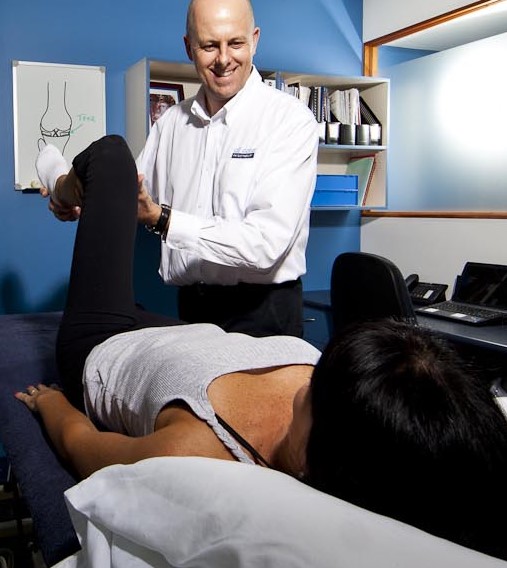Hip Pain – what can I do about it!
I have a pain in my bottom – what can I do about it!
Your hip hurts! You may have pain in the groin, over the side of the hip, groin or in the bottom. You may also feel clicking or pain when you put weight on the ground with the affected leg. What is going on?
Unfortunately, there are many conditions that cause hip pain from a musculotendinous strain, microtears of tendons (tendonopathy), bursitis, actual hip joint pain, impingement, to a form of an internal ligament tear called a labral tear.
Clinical diagnosis is important with specific tests able to diagnose the problem or with the aide of an MRI.
What factors are important with Hip pain?
Research into the disorders of the hip has exploded over the last 15 years. The good news from this is that we know that hip pain may be related to various conditions but the overall function of the hip with each of these conditions has deteriorated leading to hip dysfunction. This means that specific rehabilitation has a high probability of improving the hip joint function and reducing pain.
What is Important for Good Hip Function
Range of movement
The hip joint is a large weight bearing joint that is basically a ball and socket joint that has strong ligaments for stability and numerous muscular attachments for generating power to move, sit to stand, squat and climb stairs.
The hip needs to have adequate range of motion to enable its proper function. Common restrictions are a limitation of flexion (knee to chest), extension (taking the leg behind you) and rotation (the range of rotating your foot in/out when sitting).
Hip muscle strength
The hip joint is meant to take a lot of load and needs good muscular support to enable it to do this properly. Common patterns of weakness are the hip extensors, abductors and external rotators. Effective muscle control and strength is necessary to enable good hip function.
Hip muscle balance
Any joint that needs to have control in many directions needs to have balance between the muscles on one side of the hip to the other. A common pattern is overactivity of the adductors (inside leg muscles) and the outside abductors. Correction of this imbalance is important for good hip function.
Trunk stability
The hip attaches to the trunk via the pelvis. The ability of the trunk and core muscles to stabilise the trunk over the pelvis is also crucial for good hip function.
What is the Best Treatment for Hip Pain?
Improve the Range, Strength and Balance of your Hip
A good assessment will guide what needs to be addressed in an exercise programme, specific stretching and “hands on” treatment.
Correct Your Sitting/Standing positions
Basically the human body is not meant to sit for long periods on a repetitive basis. The hip joint allows us to stand and walk. Repetitive positioning of our hip joint will affect the stresses on the muscles, ligaments and bursa around the region.
Common issues are prolonged sitting in low couches or chairs with the knees above the hip resulting in increased loading on the front of the hip. Sitting with the legs tucked up underneath your bottom or rotated underneath you. Standing in either a position of hanging off the front of the hip or out the side passively stretches structures leading to increased load on these tissues.
Modification of Activities
Most of the common ones have been talked about above. Other modifications that may be necessary are minimising the amount of loaded range of the hip until the hip function is adequate. For example, deep squats of lunges with exercise, running, rock climbing etc.
Great rehabilitation exercises
At All Care we implement a full hip assessment to pick up what areas will need to be addressed as part of the rehabilitation process. A good rehabilitation programme will need to address all of the deficits that are causing hip dysfunction leading to stress and strain on some structure around the hip.
Here are our best exercises to help. Off course any exercise is best undertaken under the supervision of your All Care Physiotherapist and if any of these are painful please seek our input.




